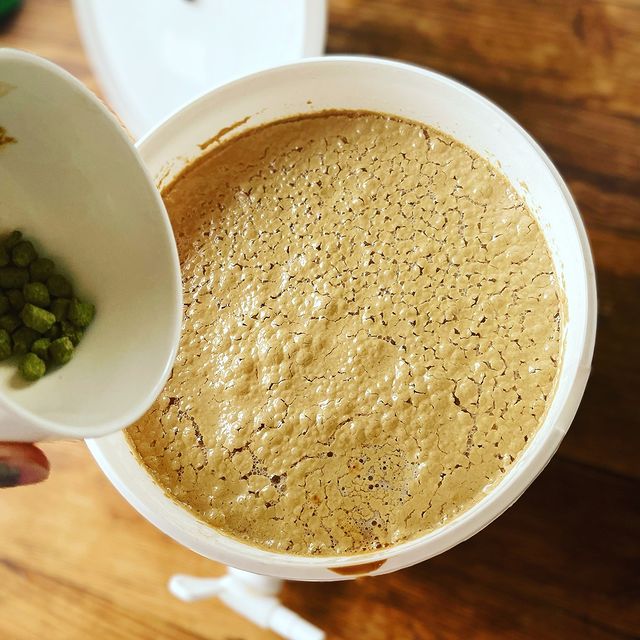The Science of Brewing Beer

Have you ever wondered how brewing beer actually works? From turning a bunch of grains into delicious, fizzy goodness!
We’ve broken down the key steps of the home brewing process, for those who want to geek out about how it works 🤓

1/ The Mash
The mash is where the magic begins. It's the process of soaking crushed grains in hot water, allowing the enzymes to convert starch into fermentable sugars. This creates the sweet concoction known as wort (pronounced ‘Wert’) – the lifeblood of your soon-to-be brew.
The temperature during the mash is a carefully chosen parameter that influences the beer's character. At lower temperatures (63–68°C), a specific type of enzyme called alpha-amylase is more active. Alpha-amylase breaks down starch molecules into shorter chains of sugars. These shorter chains are highly fermentable by yeast, leading to the production of more sugars. This results in a drier beer with a crisper finish.
On the flip side, higher temperatures (68–74°C) encourage beta-amylase to become more active. Activation of beta-amylase results in the creation of less fermentable sugars, yielding a fuller-bodied beer with a sweeter profile.

2/ The Boil
After all the sugars have been extracted, the liquid (also called the Wort is boiled, usually between 60 and 90 minutes. This process sterilises your Wort, and it’s during this stage that the hops are added, giving your kitchen a hoppy beer smell!
At the beginning of the boil, the bittering/boiling hops are added. These hops, as per their name, determine how bitter the beer is. It takes a while to extract the bittering acids, hence the longer brew time. Towards the end of the boil the aroma/finishing hops are added. The oils in these hops give each beer it’s own unique aroma. As these are the most volatile, they evaporate more easily and so are left until the end to be added.

3/ Cold Break
The Wort then needs to be cooled down as soon as possible. There are a few reasons. First, it helps keep those aroma oils in the brew, so the final beer has a hoppy aroma. Secondly, the quicker the liquid cools, the quicker the yeast can be added and reduces the chances of any contamination. And finally, when the Wort is still warm (above ~26°C), oxygen can interfere with the alcohol by oxidation which can result in an off-smelling beer, which no one wants!

4/ The Fermentation
Now we get to the alcohol making. Fermentation is the process by which the yeast converts glucose into alcohol. The more sugars that are in the Wort, the higher the ABV (alcohol content). As well as producing alcohol, the process also produces carbon dioxide which escapes through the airlock and causes that satisfying bubbling sound!
The fermenter must not allow any air to enter, as this can cause contamination. The other consideration is oxygen. Oxygen helps initiate fermentation at the beginning, however if it’s introduced after primary fermentation it may cause the yeast to produce more of the unwanted by-products, affecting the final aroma and taste.

5/ Bottling & Conditioning
Most importantly with bottling is keeping the beer contamination and oxygen free. Of course, also to give it its fizz! Additional sugar is added as ‘food’ for the yeast and carbon dioxide is produced, which carbonates the beer.
6/ Drinking
Finally, the magical moment comes when it’s time to try the beer! With homebrew, storing the beer upright helps the sediment to settle at the bottom to give the beer a better clarity.



Comments